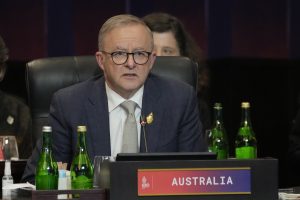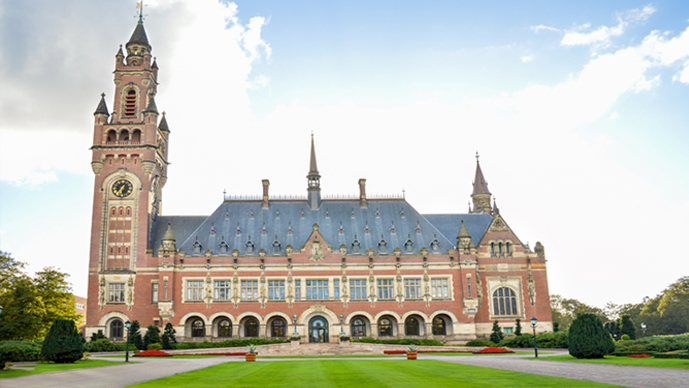American woman saves hundreds of bats from freezing to death
Cathy Free13:13, Dec 31 2022
Mary Warwick's heart sank when she realised temperatures were plunging below freezing in Houston in the days before Christmas.
She raced over to downtown Houston before sunset on December 21 to check under the Waugh Drive Bridge, where a colony of 250,000 bats has lived for almost 30 years and is a popular attraction.
Her fears were confirmed: There were dozens of tiny bats on the ground suffering from hypothermia, too weak to hold on to the narrow crevices in the concrete beneath the bridge. They had dropped four to nine metres onto the cold cement below and looked lifeless.
"They're only three inches long at the most, they don't have much body fat and they get cold very quickly," said Warwick, executive director of the Houston Humane Society TWRC Wildlife Centre. "When they shut down from hypothermia, they release from the bridge and some of them will die."
Warwick, 60, put on a pair of gloves and gently collected the unresponsive bats one by one. She picked up 138 bats and placed them in a box lined with a soft blanket.
"I put the box on my heated car seat, and as the bats warmed up, they started moving around," she said.
Warwick said she was horrified to see the small animals in distress, but glad she had taken a break from her holiday shopping to check on them. They are part of a colony of Mexican free-tailed bats that thrive in temperatures above 10C. While most Texas bat populations head south for the winter, she knew that a sizeable number remained behind.
She was determined not to have a repeat of the time in February 2021 when Texas endured arctic temperatures for nine days, and more than 5000 bats dropped from the bridge and died in the cold.

ROBERT WARWICK/ROBERT WARWICK
Warwick with one of the Mexican free-tailed bats she rehabilitated in Houston over the holidays.
Warwick decided to take them home to warm them up in an incubator. She injected fluids beneath the bats' skin with a needle and syringe and hand-fed them a gruel made of mealworms, she said.
For the next several nights, she returned to the Waugh Drive Bridge with extra boxes and a flashlight to rescue more bats, and she stopped at another bridge south of Houston to rescue bats from a second colony.
"By the time I was up to 900 bats, I decided it was time to slow down their metabolism so they wouldn't need to eat as much," she said. "It was becoming pretty time-consuming to care for them all."
The solution, Warwick decided, was to put the recovered bats in large dog kennels in her attic where the temperature was cooler, until it had warmed up enough outside to return them to the bridge.

MARY WARWICK/MARY WARWICK
Warwick kept the most critically injured bats in a warm incubator inside her Houston home.
"When it's cold, but not freezing, their metabolism will slow down," she said.
The Houston Humane Society posted on social media that Warwick was single-handedly rescuing the creatures. People quickly offered to help.
"I adore sky puppies - not just for their adorable faces and gentle natures, but for everything they do for us in Texas, mosquito wise," one person commented on Facebook. "Happy to donate and thank you for helping these beautiful, so misunderstood little guys."
Chris Cruz, a sign-language interpreter who often drives past the bat colony and enjoys watching them in warmer weather, said he immediately felt compelled to spend his Christmas Eve looking for cold and injured bats.

Warwick rescued hundreds of bats.
"I was scrolling through Instagram when I came across a local TV story about what Mary was doing," said Cruz, 31. "I thought that was something I could help with, so I grabbed a foam cooler and poked some holes in it."
Cruz found 14 bats on the ground and carefully swept them into the cooler with a handheld broom, he said. He then took them home to warm them up and arranged to turn the bats over to Warwick on Christmas Day.
"I was worried that one or two might not make it through the night, so I was happy when they all started scurrying around in the box," he said, noting that he didn't dare take the lid off.
"It was a fun way to spend Christmas," Cruz said. "Bats don't really ask for anything, and I was happy to help them. Besides, they're pretty cute."

MARY WARWICK/MARY WARWICK
Some of the bats rescued by Warwick and volunteers during a cold snap in Houston.
By Christmas night, Warwick said she had more than 1500 bats hanging inside dog kennels in her attic. She kept bats from the two colonies in separate containers and made sure to keep them hydrated.
"What she did for these bats is incredible," said Beverly Brannan, board chairperson for the Houston Humane Society.
"Mary is really the only bat expert in our area - she's a one-woman show," she said. "When she saw that those bats needed help, she didn't sleep for several days so she could save them."
Brannan, 82, said she picked up several boxes filled with bats from volunteer rescuers and delivered them to Warwick's house.

ANIAH HERNANDEZ/ANIAH HERNANDEZ
Chris Cruz with a cooler full of bats he rescued.
"When I got there, she was triaging bats, doctoring them and feeding them, one bat at a time," she said. "Her dedication to the bats was next level."
Warwick said her instincts as a wildlife expert kicked in and she felt an obligation to see the rescue through to the end.
All creatures - no matter how small - have value on the planet, she said.
Over the years, she has also rehabilitated squirrels, raccoons, hawks, ducks and owls, Warwick noted.
"Mexican free-tailed bats are common in Texas, and I'd received some training on caring for them," she said. "These bats are important to our ecosystem and they eat lots of mosquitoes. The bridge is also a popular tourist attraction, so the bats deserve our help."
Although 115 of the bats couldn't be saved, the rest perked up after five or six days. Most of the Waugh Drive Bridge bats were released back to their colony after sunset on December 28, and the others will be released in the coming days, Warwick said.
"I'm excited to get them out of my attic and send them back into the wild," she said. "I hope they'll stay warm and happy, but if they need help, we're here."










